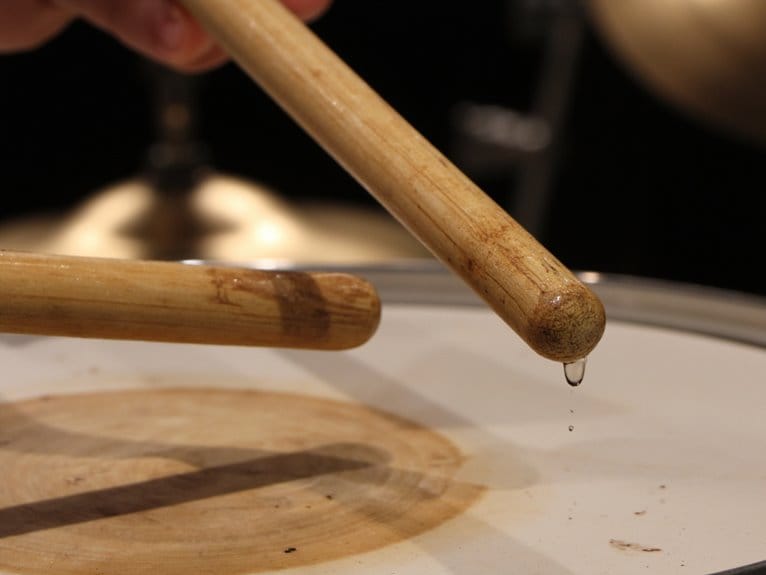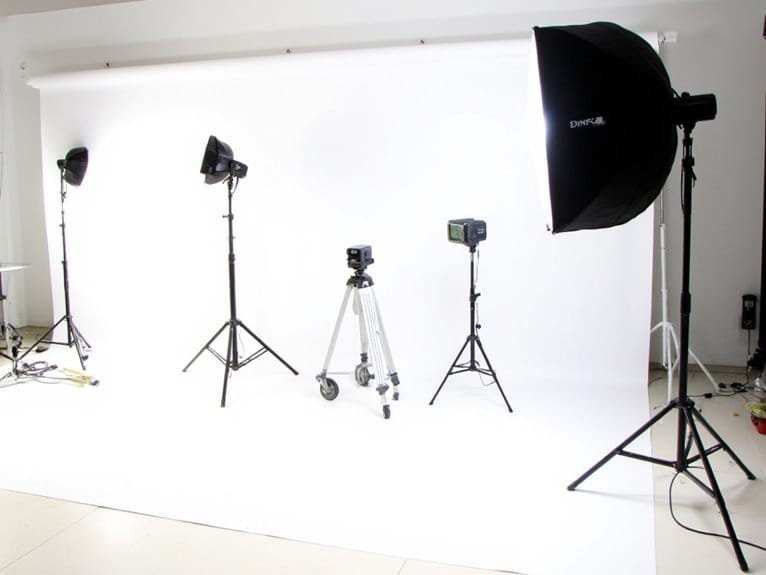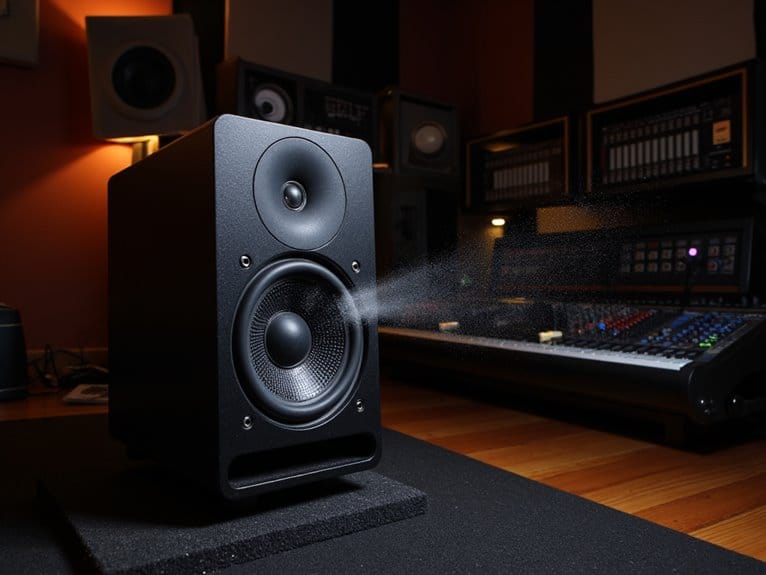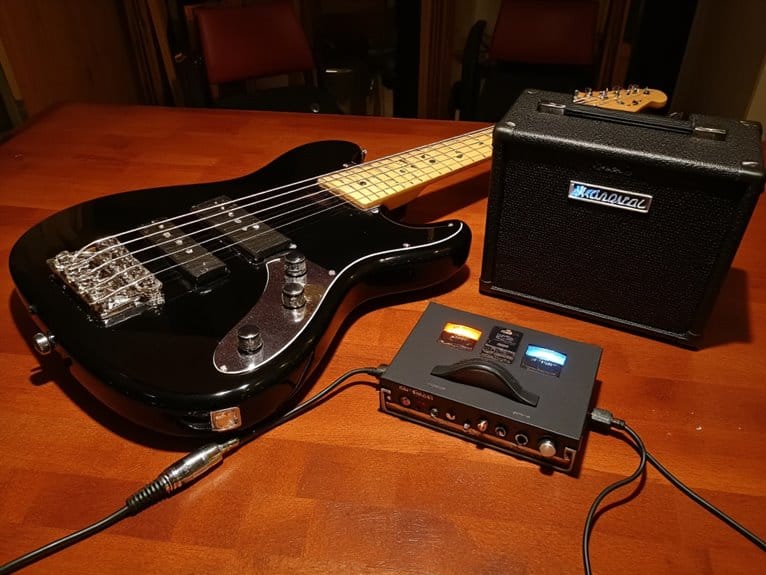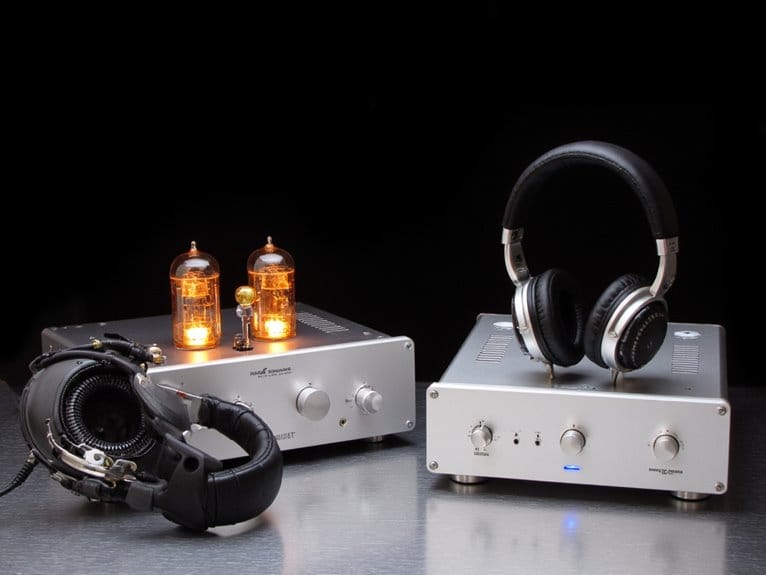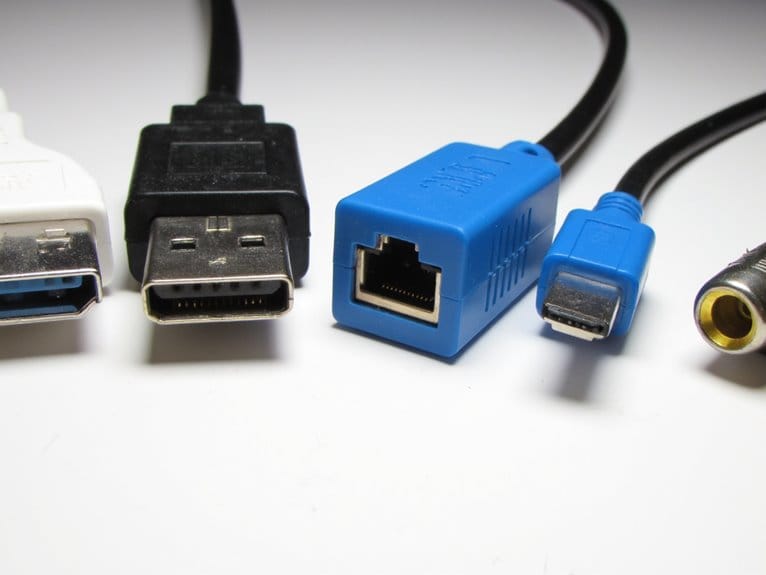Drum Programming That Doesn’t Sound Programmed
You’ll achieve natural-sounding drums by shifting hits 5-10 milliseconds off the grid, nudging kicks slightly behind while pushing snares forward to create that essential push-and-pull groove. Apply minimal swing amounts around 10-15%, layer samples with proper phase alignment, and incorporate ghost notes with varied velocities to mimic real drummer dynamics. Select clean, unprocessed samples without baked-in effects, then add subtle pitch variations and round-robin sampling to eliminate mechanical repetition-these foundational techniques reveal professional-grade programming secrets.
We are supported by our audience. When you purchase through links on our site, we may earn an affiliate commission, at no extra cost for you. Learn more.
Notable Insights
- Shift drum hits 5-10 milliseconds off the grid and nudge kicks behind while pushing snares forward for natural groove.
- Apply 10-15% swing using DAW templates across all drum elements to inject organic feel without sounding unnatural.
- Layer velocity-sensitive samples with round-robin rotation and subtle pitch variations to eliminate mechanical repetition and add authenticity.
- Incorporate ghost notes, syncopated patterns, and polyrhythms with varying velocities to create dynamic, human-like performance characteristics.
- Select clean, unprocessed samples with proper phase alignment when layering to maintain flexibility and prevent muddy, artificial-sounding results.
Breaking Free From the Grid: Timing and Velocity Techniques
While most producers start their drum programming journey by snapping every hit to the grid with military precision, I’ve learned that the magic actually happens when you deliberately break away from that robotic perfection.
Your timing techniques should include subtle shifts of 5-10 milliseconds before or after the grid line, mimicking how real drummers naturally rush or drag certain beats. I typically nudge kick drums slightly behind the beat while pushing snares forward, creating that vital push-and-pull groove.
Velocity modulation becomes equally important-varying hit strengths by 10-15% between similar notes prevents that mechanical sameness that screams “programmed.” When you combine these micro-timing adjustments with dynamic velocity waves across song sections, your drums suddenly breathe with human-like imperfection.
Creating Natural Groove With Swing and Feel
Those micro-timing adjustments I’ve covered set the foundation, but they’re just the beginning of what transforms programmed drums from mechanical loops into living, breathing rhythms.
Your DAW’s swing templates offer preset timing variations that instantly inject natural feel into rigid patterns, with subtle delays applied to specific beats that mimic how real drummers naturally lay back or push forward.
Swing templates transform mechanical drum patterns into humanized rhythms by mimicking real drummers’ natural timing variations.
I recommend starting with minimal swing amounts-around 10-15%-since excessive adjustments quickly sound unnatural and disruptive.
Groove variations become particularly effective when you apply consistent templates across all drum elements, unifying your kit’s rhythmic character while maintaining that organic flow essential in funk and jazz styles, where even slight timing deviations create the laid-back pocket that defines authentic groove. The choice of shell material significantly affects the resonance characteristics that complement these programmed grooves, as different woods provide varying tonal qualities that enhance the natural feel you’re creating.
Just as chorus pedals create depth and richness across various musical genres through BBD circuitry and analog warmth, these timing variations add dimensional character that separates professional productions from amateur programming.
Building Dynamic Patterns That Breathe
Three fundamental techniques separate amateur-sounding drum programming from patterns that pulse with organic life. I’ve discovered that mastering syncopation, polyrhythms, and dynamic velocity creates the breathing quality that transforms mechanical loops into compelling grooves.
You’ll want to start with syncopated patterns, placing snare hits slightly off-beat to generate that forward momentum that makes listeners move.
I’ve found that combining these with polyrhythms-overlaying a 4/4 kick with 3/4 hi-hats-creates intricate layers that sound impossibly human. The secret lies in rhythmic variation through ghost notes and velocity changes that replicate how real drummers naturally accent certain hits while backing off others.
Your humanized grooves emerge when you rotate between similar but distinct patterns, incorporating organic fills that maintain continuity while preventing mechanical repetition.
Sample Selection and Layering for Authentic Sound
The foundation of convincing drum programming rests on two critical pillars that I’ve learned can make or break your entire track’s authenticity: selecting samples that match your sonic vision, and layering them with the precision of a master craftsman.
Your sample curation process should prioritize clean, unprocessed recordings that allow maximum flexibility during production, while avoiding samples with baked-in reverb or effects that limit creative control.
Effective layering techniques involve combining complementary frequency content across multiple samples, using velocity layers that trigger different recordings based on hit intensity, and implementing round-robin sampling to eliminate mechanical repetition.
I’ve found that careful phase alignment between layered elements prevents muddiness, while subtle pitch variations and modulated parameters create the natural inconsistencies that separate authentic-sounding programming from robotic sequences.
Pay careful attention to sample tuning when layering elements, as mismatched pitches can create unwanted dissonance that undermines the cohesive quality essential for professional-sounding drum programming. Balancing genre standards with personal style preferences ensures your drums sound both familiar and distinctive within your chosen musical context.
On a final note
You’ve got the tools now-timing variations that break the mechanical grid, velocity adjustments that mirror human inconsistency, swing settings that add natural pocket, and sample layering techniques that create dimensional depth. Don’t overthink it; your ears will guide you better than any formula. Start with subtle changes, maybe 5-10% timing shifts and gentle velocity curves, then build from there. Remember, real drummers aren’t perfect, and neither should your programming be.

